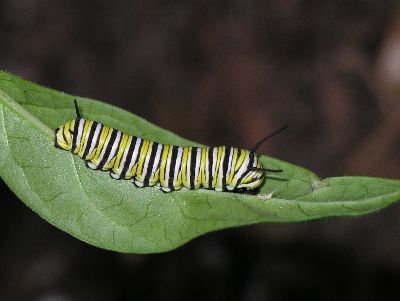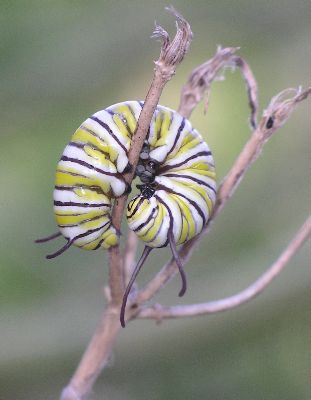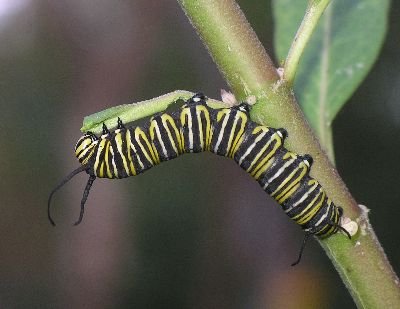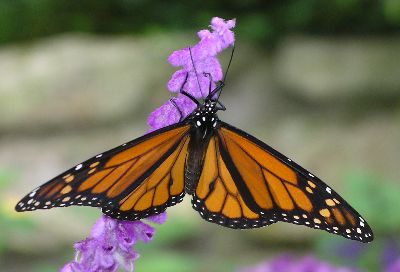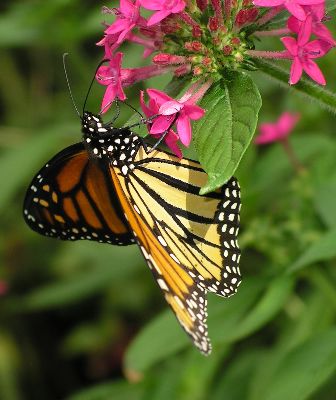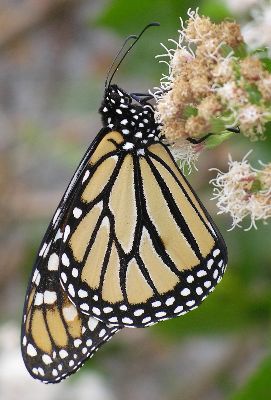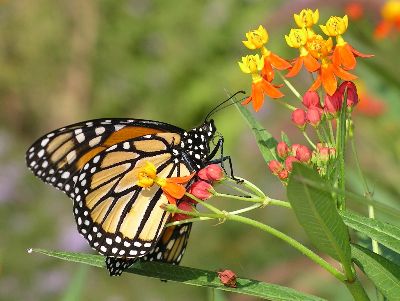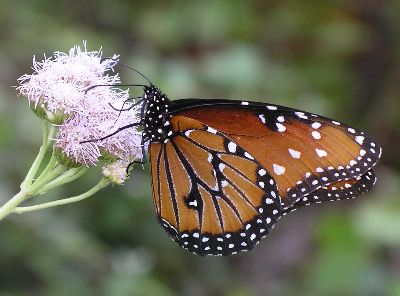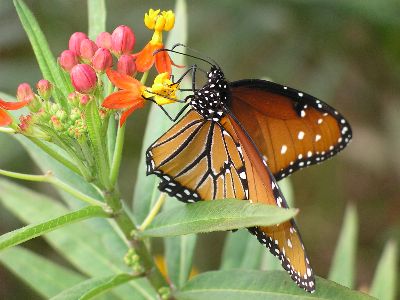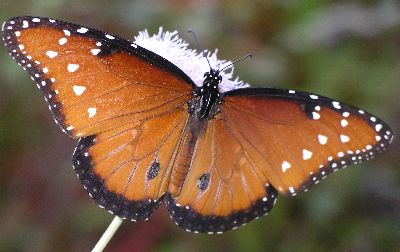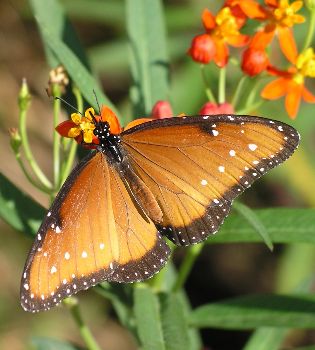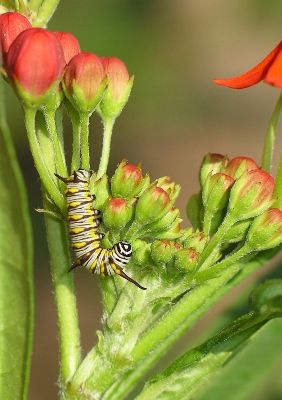The images presented in these galleries are reductions of photos taken by Valerie with a Pentax Optio 450 digital camera. The compression has been increased to 80% (100%=no compression) and the dimensions reduced in order to save bandwidth and facilitate page loading. The information below each image gives the size in pixels and kilobytes of the original file as well as the title by which to request the larger version. All of the original files are in jpeg format, most at about 95% compression, and are suitable for printing, desktop wallpaper, or detailed study. While the images here are free for the taking (right click - save as; do not link to these images directly), the larger versions are also available by sending a request to Valerie via . The frames around the gallery photos are not part of the same file and are only for presentation on this site.
Although the photos are free to use, they are copyrighted by LARVALBUG and remain the property of the owners of this site. We request that any public use of these images be accompanied by a credit to LARVALBUG.COM and, when appropriate, a link to our site (<a href="http://www.larvalbug.com/">LARVALBUG</a>). Commercial use of the large files can be arranged for a modest fee.
To request larger files or ask any questions please send an e-mail to Valerie at .
|
|
Milkweed Butterflies, genus Danaus. Only two species in the family Danaidae occur in the United States: the famous monarch and the less well known queen. The larvae feed almost exclusively on milkweed plants, from which they obtain poisonous chemicals that protect them from predators. Most of the photos on this page were taken at Zilker Gardens in Austin, Texas. An article on milkweed butterflies in larvalbug's garden provides more information and additional pictures of these species.
Monarch Caterpillar (Danaus plexippus). Easily recognized by their smooth, striped bodies and two pairs of fleshy tentacles, the monarch larvae are found feeding on the brightly colored butterflyweed (Asclepias tuberosa) every summer in our area. This individual is accompanied by a tiny leafhopper nymph.
Dorsal view of another monarch caterpillar.
This monarch caterpillar is much lighter colored than usual. It is also strangely curled around a dead plant stem. It could be that the insect is ready to molt into a chrysalis, but by the time it is swollen and smooth looking like this, it is usually hanging in a secure place.
A dark monarch caterpillar. The amount of black which appears to overlay the white and yellow on individual caterpillars occasionally varies. This dark individual was one of a brood that were all similar. The photo was taken in late November.
Monarch chrysalis. When the caterpillar matures, it attaches to something, hangs down, and sheds its old skin. The resulting chrysalis smooths out and hardens into a gem-like green form with gold decorations. As the butterfly develops inside, the walls of the chrysalis become transparent, revealing the orange and black colors of the adult. This one is just starting to show the inner insect.
Adult Monarch Butterfly. While the caterpillars have a limited diet, the adults visit a wide variety of flowers. This one is feeding on nectar from the blossoms of a Mexican bush sage (Salvia leucantha).
Monarch on butterflyweed. While we see monarchs around here most of the summer, it is during their autumn migration south that they are most numerous. The butterflies not only stop to feed, but during dry years, will also visit our ponds for a drink. Some years our loquat tree blooming in the fall attracts numerous monarchs, while other years we see none.
Monarch on pentas (Pentas lanceolata). Because of their large wing size, monarchs are almost always found hanging down from flowers or resting spots. Smaller butterflies can hold their wings upright, but I can't remember ever seeing a monarch do this.
This monarch was grounded during the fall migration by cold, misty weather at Enchanted Rock State Park in Texas. There were several of these butterflies and they were all immobile. The plant is thoroughwort (Eupatorium havanense). Bad weather can delay or even kill monarchs as they migrate south in the autumn. This often happens along the Gulf coast and butterflies litter the beaches.
Ventral view of a monarch. The migration of monarchs is one of the most amazing feats of any insect. In the early spring, the monarchs that move through our area leave Mexico and start producing eggs almost immediately. Some of the second and third generation butterflies make it all the way up to Canada, but they all must head south in the autumn because of the cold weather. We see caterpillars as late as November in our area. If the weather holds out, these will become adults and migrate down to Mexico along with the older butterflies.
Ventral view of Male Queen Butterfly (Danaus gilippus) on mistflower (Eupatorium coelestinum). Both the monarch and the queen butterfly males have a special scent patch in the center of their lower wings. It is more visible on the queen, and here can be seen as the lowest white spot with a black outline near the lower center of the bottom wing.
Ventral view of a Female Queen Butterfly. The scent patch spot on the lower wing is conspicuously absent on this individual, which identifies it as a female. The queen butterfly is about the same size as the monarch, but is more of a brownish orange and lacks the strong black veins on the dorsal side of the wings.
Dorsal view of the male queen butterfly. Although the underside of the butterfly can be mistaken for a monarch, the lack of black veins on the tops of the wings is very different. The scent patches on the lower wings are visible as obvious black spots.
Female queen butterfly. The scent glands on the lower wings are absent. Queen butterflies are not always common here in Austin. Some years there are a lot of them and other years none can be found. Like the monarchs, they cannot endure a freeze and so must fly from the warmer southern areas each year. They do not, however, make the spectacular migrations of the monarchs.
Queen caterpillar. Like monarchs, the larvae of the queen butterfly almost exclusively feed on milkweeds. They also look similar to the monarch caterpillars. However, they have three pairs of tentacles instead of just two.
This very young queen caterpillar is only about 1/2 inch long. It is feeding on the same butterflyweed that is preferred by monarchs. I've never found both kinds of caterpillars on the same plant. The yellow spots on the back of the caterpillar are very raised on young individuals. Sometimes these spots are missing and the caterpillar is much darker. It is just a variation in the coloration.
Head on view of a queen caterpillar.
|
